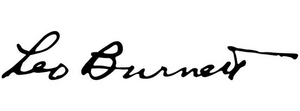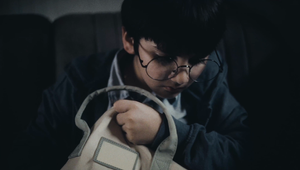
Kalpesh Patankar on Industry Craft Being “Labours of Love”

‘There Ain’t No Rules’ is Kalpesh Patankar’s motto, and the same creative thinking is weaving its way into his Industry Craft jury room.
Having started his career in India, before moving over to Singapore and then finding a home in the UAE, he’s a creative with global experience, creating international work for his clients. That experience is what he refers to when considering the craft behind work, as well as the previous winners within the category. “AI is still helmed by human creativity,” he reflects, as he considers how technology is continuing to impact on this category and all of creativity in general.
To hear more about his judging process, as well as share the magic of his first Cannes Lions experience, Leo Burnett UAE’s CCO sits down with LBB.
LBB> What are the current big debates within the Industry Craft category - or more generally across the industry - that you expect to see coming through in the jury room?
Kalpesh> Craft is a beautiful and unique category that celebrates labours of love. While there is a great deal of subjectivity when it comes to judging creative work, there can be no debate about the hard work, painstaking efforts, and outpouring of passion that goes into creating any well-crafted work. If at all, if there could be any point of contention, it might be about the role of new technologies like generative AI, in a category like craft. But even then, it’s too early for there to be any ‘debates’ about it because AI is still helmed by human creativity and it has not yet at least, surpassed the unique and perfect imperfections of real, human skill.
LBB> Looking at ‘My Japan Railway’ and ‘Hope Reef’ from the last few years, how do they embody the category and how are you using these pieces of work to support your own judging process?
Kalpesh> They are both phenomenal pieces in their own right. If I take ‘My Japan Railway’ as an example – it is a benchmark in the kind of work this category has been created to celebrate. It is craft at its purest and best. It was rooted in local, cultural truth and each execution embodied the nuanced skills and styles of Japan’s various regions. And it didn’t stop there – it then crafted the entire experience to be digital, user-friendly and accessible. It was real, it was well thought through, it was meaningful, and it was beautiful – it is the kind of work that we should look to celebrate more.
LBB> Are there any other previous winners or pieces of work which have inspired you within this category?
Kalpesh> Too many to name all. Just last year alone, there were some fantastic pieces winning gold in the category. From ‘A British Original’ that deserved the Golds it bagged for copywriting, to the unreplicable magic of Honda’s photography in ‘The Beautiful Fail’, or the new frontier in purposeful craft set by the typography of ADLaM.
LBB> Humour is the big new 'culture and context' subcategory this year - how do you think comedy could be better leveraged, and do you think it’s possible to include this within the Industry Craft judging category?
Kalpesh> Absolutely. Humour is a craft in itself. There’s a reason stand-up comedy is such an up-and-coming field. There is craft in the writing of jokes, there is craft in their delivery, and there is craft in the narratives being weaved. There is craft in the simple but powerful humour being employed in the daily cartoons of newspapers all over the world, every day. The craft of humour is all around us and is increasingly important in our industry – where our work is not just competing with other campaigns, but with the overarching concept of entertainment on social feeds, OTT platforms, and more, of which humour is a big part.
LBB> How do you think clients can enable their creative agencies to unleash better comedic campaigns and projects?
Kalpesh> There’s definitely a difference between comedy and a sense of humour. It goes without saying, that outright ‘comedy’ per se can’t always be well-suited to every brand for every kind of campaign. But that said, there can always be place to have a unique sense of humour, in the personality of any brand that’s willing to embrace its lighter side. And with the increasing culture of purpose work, this sense of humour or wit, lightheartedness/playfulness seems to take a backseat – even though purpose and humour are not necessarily mutually exclusive. One of the most iconic campaigns of our generation – ‘Dumb Ways To Die’ – employed a humorous tone for a very serious and purposeful campaign to combat deaths on the rail tracks. At the end of the day, it’s a matter of working together – not as client and agency– but as brand custodians, to identify the relevant opportunities, along with the right style and tone, and bring it to life in a befitting way.
LBB> How do you expect AI to impact the Industry Craft category? How will creatives consider this during the creative process and how will jurors award the work being produced?
Kalpesh> The billion-dollar question Things may change in the future, but for the foreseeable period, AI is a tool. Not unlike a graphic tablet, or a camera, or the Adobe suite, or the letters on a keyboard. It is still deployed by the skills, creativity, and vision of human talent. Take generative AI, for instance. The craft is in the repeated writing of prompts, and continuous tweaking, and painstaking collection and input of the right references by the creator – to get the perfect, desired result. I expect that these criteria of the effort, vision, and creativity of creators – irrespective of the tools deployed – will continue to hold weight in jury rooms everywhere.
LBB> Outside of the jury room, what are you really looking forward to learning or doing at this year’s Cannes Lions?
Kalpesh> Cannes Lions is very aptly called a ‘festival’. Like any other festival, every year, I look forward to certain rituals, celebrations, and that distinct sense of community you only find there. I look forward to meeting friends and peers from around the world, discussing trends, exchanging thoughts, and of course – celebrating the best work that has taken hard work, grit, and unbeatable passion to create.
LBB> Do you have any advice for people attending for the first time?
Kalpesh> Take it all in. I remember the first time I visited Cannes as the winner of Young Lions India, I found it overwhelming. It was exciting, it was surreal, it was magical – and it was all too much happening all at once. But that’s also the beauty and fun of it. So take it all in. Do as much as you can, visit the workshops that interest you, speak to the people whose work you admire, make new friends, click selfies outside the Palais, visit the booths at the different beaches, take in the sights and tastes of the town, savour the rosé – and no matter what you do, make sure to visit the Gutter Bar.












